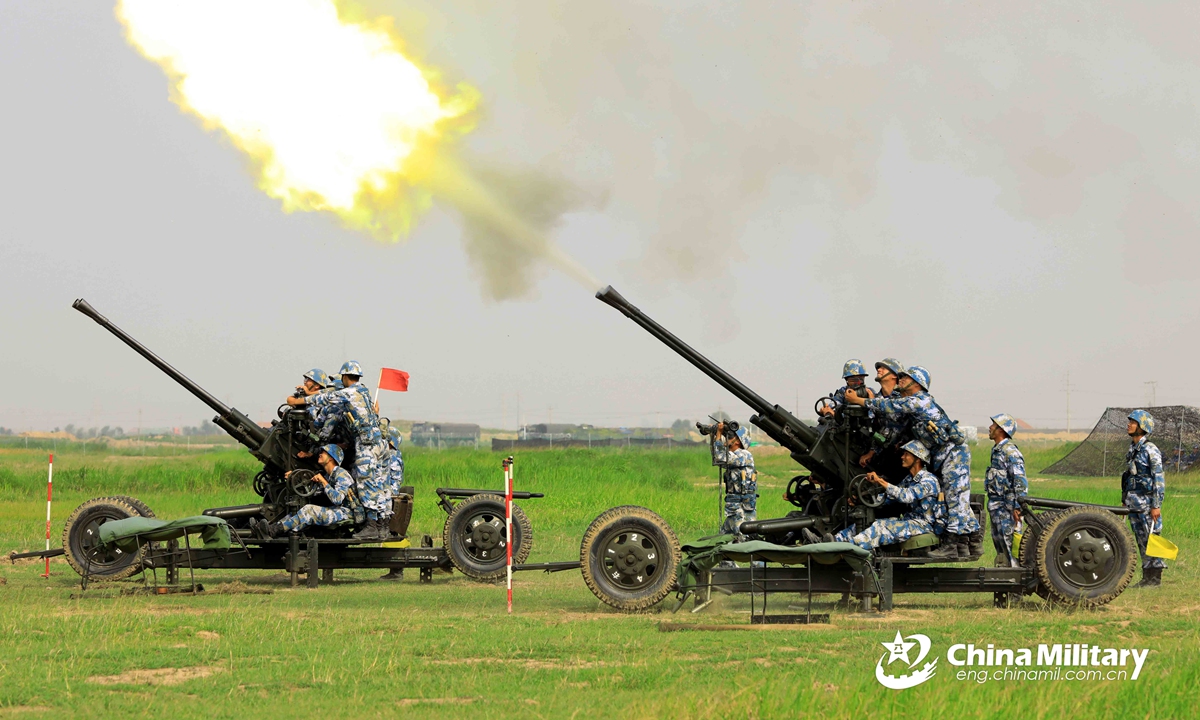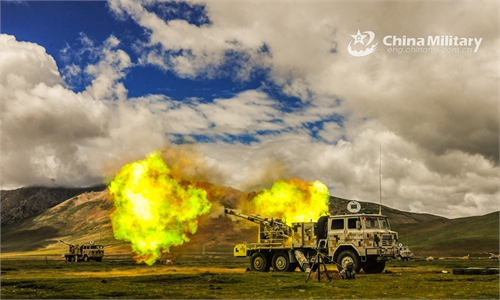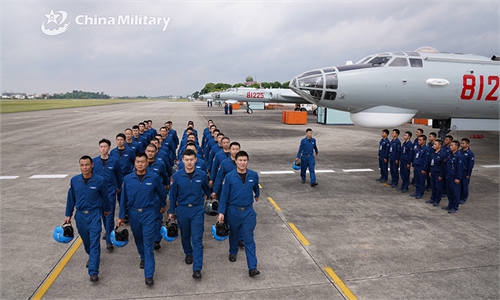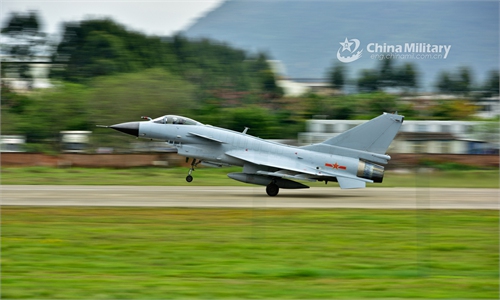
Soldiers assigned to a brigade of Marine Corps under the PLA Navy fire anti-aircraft artilleries during a recent live-fire training exercise. (eng.chinamil.com.cn/Photo by Shang Wenbin)
The Chinese People's Liberation Army (PLA) recently held a series of anti-aircraft drills off the South China Sea, a sensitive location to which the US has been frequently sending warplanes for close-up reconnaissance.
The drills showed that China stands ready to safeguard its security, and close-up reconnaissance operations by the US are provocative in nature, and could lead to misjudgments, accidents and escalations, observers warned Wednesday.
A combined arms brigade attached to the PLA 75th Group Army recently was sent to South China's Guangdong Province off the South China Sea and held a live-fire air defense firing exercise, in which the air defense troops' actual combat capability was comprehensively honed, China Central Television (CCTV) reported on Tuesday.
During the drills, the radar unit identified the mock target the moment it entered the air space of the troops' position, and reported its location, direction, altitude and speed to the anti-aircraft guns. Four self-propelled anti-aircraft guns simultaneously opened fire in two to three seconds, as dozens of shells formed a barrage of dozens of square meters into the sky, CCTV reported.
Two types of anti-aircraft guns were involved in the drills, namely, the twin 35mm barreled PGZ-09, China's most advanced self-propelled anti-aircraft artillery, and the quadruple 25mm-barreled PGZ-95, Shanghai-based news website eastday.com reported on Tuesday.
Both used by the PLA, the PGZ-09 and the HQ-17 air defense missile can form the most powerful ground force field air defense combination in the world, eastday.com said.
The drills involved different approaches, including linear precision targeting and dense fire coverage, to ensure the effective strikes on close-range aerial targets, the report said.
A Beijing-based military expert who asked not to be named told the Global Times on Wednesday that the drills featured some of the top PLA anti-aircraft artillery, and showed the PLA's readiness to safeguard national security.
In addition to the Army air defense troops, the Air Force is responsible for longer range air defense, and the Navy will also keep aerial threats from the sea at bay, the expert said.
The US has been frequently sending military aircraft near Guangdong for close-up reconnaissance. According to Beijing-based think tank South China Sea Strategic Situation Probing Initiative (SCSPI), the US has conducted at least four close-up reconnaissance sorties on Guangdong since the start of August, with one on August 5 which featured the first known night sortie by an E-8C battlefield command and surveillance aircraft.
Citing an anonymous PLA source, the South China Morning Post on Wednesday claimed that the E-8C even attempted to disguise itself as a commercial plane, which observers said pose a risk to civilian aircraft.
SCSPI director Hu Bo told the Global Times in a recent interview that US warplanes' frequent aerial close-up reconnaissance operations are very risky, and China is also expected to conduct corresponding measures, including raising the alert. The (Hainan Island) collision in 2001 is a direct result of US close-up reconnaissance.




